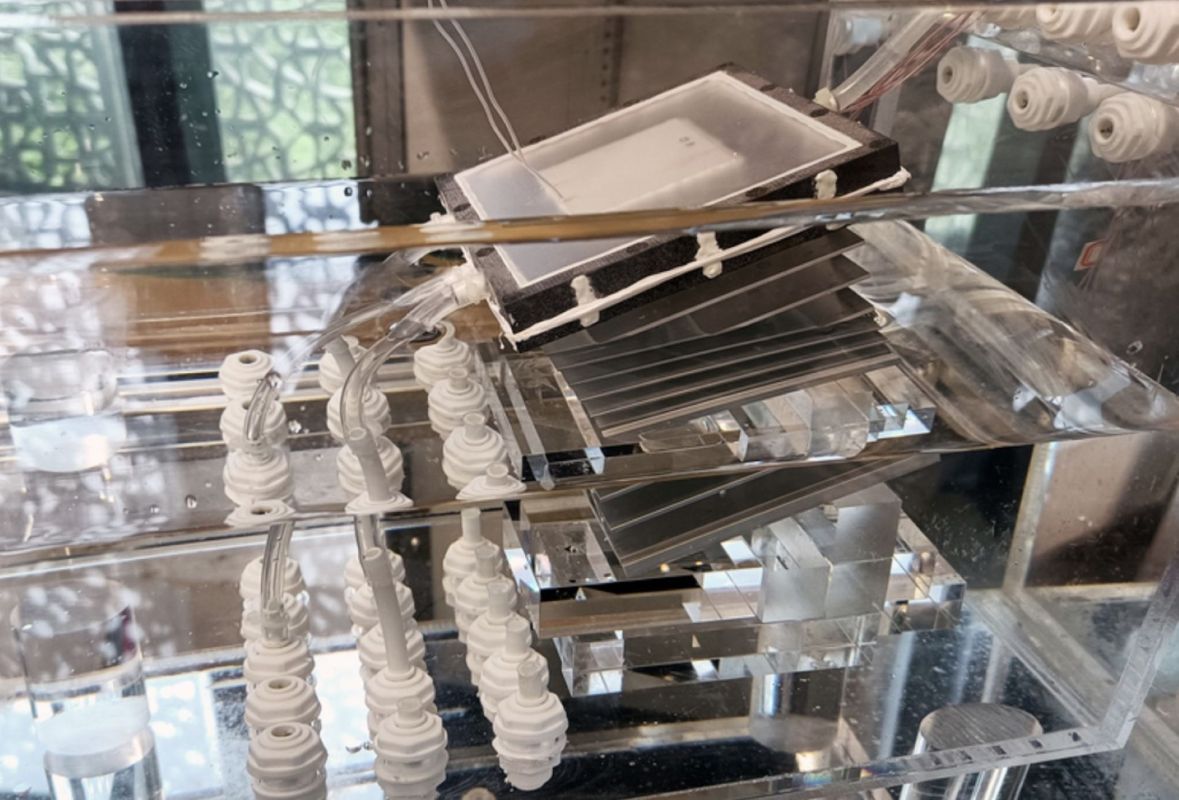The motion of the ocean and a little sunlight are the secrets to a new tool for desalination of saltwater into drinkable H2O that's cheaper than water from a tap, a recent study reports.
MIT engineers and collaborators developed a prototype that takes inspiration from ocean circulation patterns called thermohaline currents and reproduced these "in [a] small box," MIT News reports.
The device moves saltwater in eddy-like rotations in multiple stages. This swirling action, along with the sun's heat, spurs evaporation of freshwater vapor that is then condensed and collected, leaving salt behind. The system also pushes salt through so it doesn't clog.
The researchers published their findings in the journal Joule in late September.
According to MIT News, the invention "has a higher water-production rate and a higher salt-rejection rate than all other passive solar desalination concepts currently being tested."
"This is a very innovative approach that effectively mitigates key challenges in the field of desalination," Guihua Yu, a University of Texas professor not involved in the research, said. "The design is particularly beneficial for regions struggling with high-salinity water."
Save 30% on bestselling wellness products during Prime Big Deal Days Garden of Life’s clean vitamins and supplements are made with pure, whole-food ingredients to support your health and everyday wellbeing. You can boost your routine all without synthetic ingredients, artificial flavors or colors, binders, or fillers. Plus, during Prime Big Deal Days you’ll save 30% off women’s probiotics, multivitamins, grass-fed collagen, organic protein, and more. Learn more → |
Desalination is already of great interest in areas with scarce freshwater, and experts foresee creative solutions gaining importance as the world warms because of heat-trapping pollution.
According to the United Nations, about 2 billion people worldwide don't have access to safe drinking water. Only 0.5% of Earth's water is usable as freshwater, says the World Meteorological Organization. Sea level rise may make groundwater supplies saltier, too.
The new tech, scaled up, could provide water cheaply, and could be especially helpful to low-income communities in dry, coastal nations. Because it's solar-powered, users could be off-grid and wouldn't need to pay for electricity.
At the size of a small suitcase, the researchers estimate, the new system could produce about 1 to 1.5 gallons of drinking water per hour, which could make it less expensive than water from a U.S. utility.
TCD Picks » Upway Spotlight
💡Upway makes it easy to find discounts of up to 60% on premium e-bike brands
"For the first time, it is possible for water, produced by sunlight, to be even cheaper than tap water," Lenan Zhang, one of the MIT researchers, told MIT News.
"This opens up the possibility for solar desalination to address real-world problems," added MIT graduate student Yang Zhong, who was a co-author of the study.
The new system builds on earlier iterations that the team described in 2020 and 2022 papers. Those previous designs also used circulation and evaporation stages but either clogged with salt or produced fresh water less quickly.
Commenters on a Reddit post about the discovery had generally positive reactions.
"Wow, this is fantastic news! This could help avoid future water conflicts, which have been increasing in recent years," said one Redditor.
"If this didn't come from MIT News, I'd be very skeptical instead of regular skeptical. Big if true," said another.
Several commenters wondered about the concentrated salt left over after desalination.
The researchers acknowledge that dealing with leftover salt and scaling up the technology are challenges ahead, but they are optimistic. Insider reports that domestic and international organizations are already asking about the product.
Join our free newsletter for weekly updates on the coolest innovations improving our lives and saving our planet.















